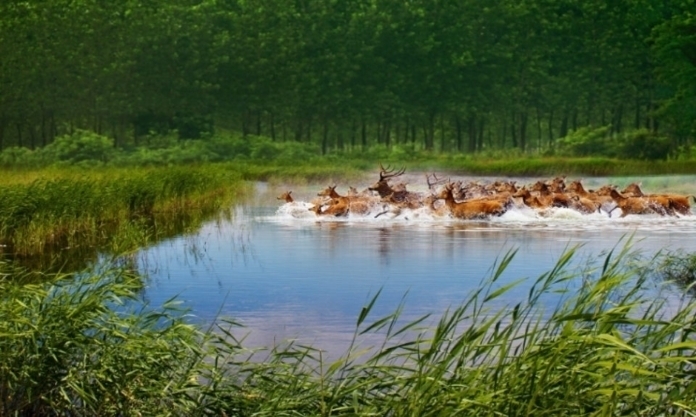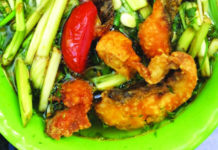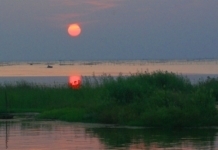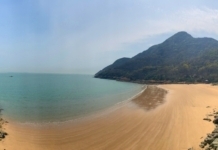Have a close look at the accompanying, beautiful photograph. Notice anything out of the ordinary?
These deer’s antlers are facing backwards.
Part deer, part horse, part cow, part donkey; say hello to the “Milu”, or “Père David’s Deer”. Outside of China, it was the French missionary, Armand David, who brought the zoological oddity to the attention of the world in 1866.
The ancient Chinese novel, “The Investiture of the Gods”, speaks of a crane walking with “four unlikenesses”, while more long-winded versions elsewhere talk of, “The nose of a cow but not a cow, the antlers of a deer but not a deer, the body of a donkey but not a donkey, the tail of a horse but not a horse”.
Merged into one and embraced by Chinese mythology, the Milu today have their home in the Dafeng Milu National Nature Reserve. The reserve is located on the east China coast in Dafeng County of Yancheng City in Jiangsu.
Those “four unlikenesses” are what set the Milu apart from other deer species. While there is really no precise way to accurately age deer other than by their teeth, with male Milu their age can be determined by their antlers. In the first 5 years of its life, one branch shall be added to the main antler beam each year. Latterly, between one and four smaller, sub branches shall grow each year.
As for that donkey reference, that’s down to the length of a Milu’s tail. Most deer species’ tails grow to no more than 10 centimetres in length, but a Milu can grow theirs over three times longer. Used to aid balance, its also handy for swatting away blood-sucking insects.
Then there are the cloven hooves of the Milu, shaped like those of cows. And being webbed too helps the Milu to avoid sinking into the ground when walking on its homeland’s soft, muddy terrain. As a result, the Milu are also top swimmers; they have even been known to swim across the Yangtze River!
And what about that long, horse-like face? Milu love water plants and evolution has provided them with a long snout to happily graze 30-40 centimetres below water, which also explains the Milu’s eyes being in the upper third of its face.
While the Milu can be found in a score of countries worldwide, the Dafeng Milu National Nature Reserve is their primary home. A count at the end of May, 2022, put the population at 3,116, around 45 percent the world total.
Extinct in the wild, the Reserve is also the only place virtually untouched by human hand where free-ranging Milu can thrive. Based on remote sensing observation statistics, this herd totals 265 in number.
Just as with most other reserves, the Dafeng Milu Nature Reserve also safeguards other species; nearly 300 other types of animals live on these coastal lands.
Among them, the White Egret has an especially-intimate relationship with the Milu. Very often, one or two of the white sea birds will stand on a Milu’s back with an elegant grace. Even while galloping, the egrets are not easily removed from their furry perch. The two animals have co-existed since ancient times.
The overall Reserve comprises 807,000 hectares of unspoilt coastal mudflats. But that term is misleading; deep forests, green grasses and colourful flowers are complimented by peaceful streams and deserted beaches.
As well as all this flora and fawna, the area is known for its salt; Yancheng in Chinese literally means “Salt City”. Here, humans carved out salt and timber works over 2,000 years ago as the mudflats were forming. Late in the 20th century, however, the decision was fortunately taken to seal the area’s prime natural landscape.
It wasn’t a moment too soon. The Milu had been hunted to extinction in the late 19th century. But Europeans stepped in just in time, taking specimens back to France and Germany to successfully breed them in captivity.
Then it was the British nobleman and politician, Herbrand Russell, 11th Duke of Bedford, who acquired some Milu from the Berlin Zoo. Having accumulated a relatively large herd, his great-grandson donated many of the Milu to the Chinese government, for the purposes of reintroducing the species to the wild.
And so it came to be that in 1986, the rare and endangered Milu made a return from Europe to its homeland, marking the beginnings of a major achievement in large-scale wildlife conservation.
Dafeng Milu National Nature Reserve (大丰麋鹿国家级自然保护区; official WeChat: 中华麋鹿园; tel: 0515-83893589 / 83391999; entrance ¥25-50), is a bit over 1 hour’s drive from Yancheng Railway Station, 2-3 hours from Nanjing by train (approx. ¥154).















